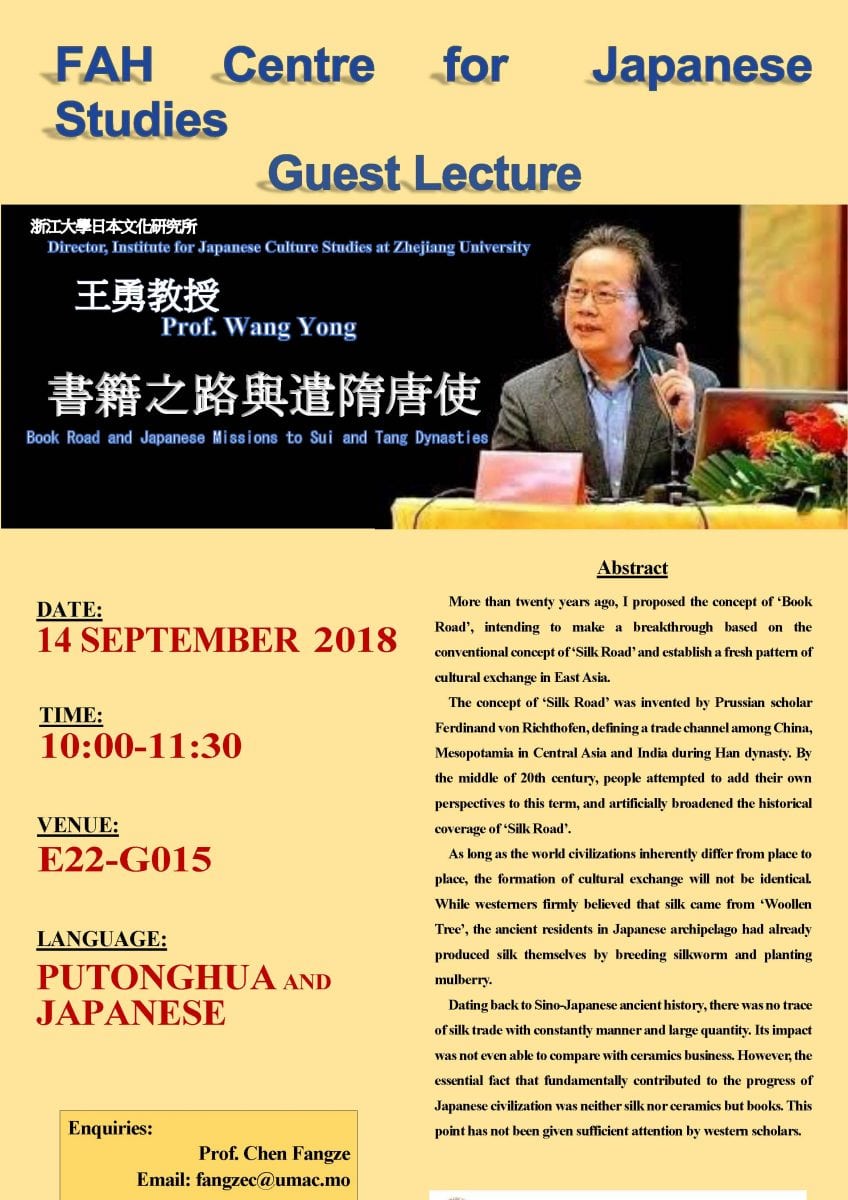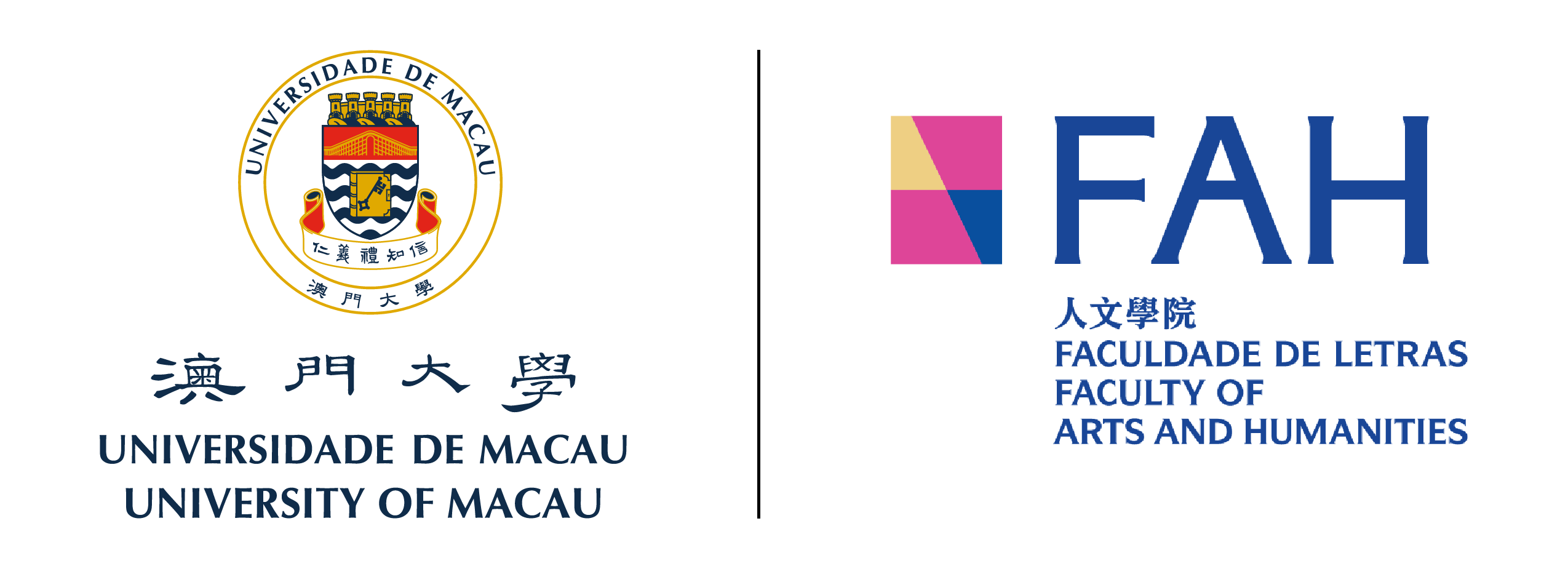

FAH Centre for Japanese Studies ~ Guest Lecture
2018-09-14 @ 10:00 am ~ 11:30 am
Book Road and Japanese Missions to Sui and Tang Dynasties
書籍之路與遣隋唐使
Prof. WANG Yong
Abstract
More than twenty years ago, I proposed the concept of ‘Book Road’, intending to make a breakthrough based on the conventional concept of ‘Silk Road’ and establish a fresh pattern of cultural exchange in East Asia.
The concept of ‘Silk Road’ was invented by Prussian scholar Ferdinand von Richthofen, defining a trade channel among China, Mesopotamia in Central Asia and India during Han dynasty. By the middle of 20th century, people attempted to add their own perspectives to this term, and artificially broadened the historical coverage of ‘Silk Road’.
As long as the world civilizations inherently differ from place to place, the formation of cultural exchange will not be identical. While westerners firmly believed that silk came from ‘Woollen Tree’, the ancient residents in Japanese archipelago had already produced silk themselves by breeding silkworm and planting mulberry.
Dating back to Sino-Japanese ancient history, there was no trace of silk trade with constantly manner and large quantity. Its impact was not even able to compare with ceramics business. However, the essential fact that fundamentally contributed to the progress of Japanese civilization was neither silk nor ceramics but books. This point has not been given sufficient attention by western scholars.
大約在二十年前,筆者立足於東亞文化交流的歷史事實,針對長期以來研究文化交流史的主流觀點“絲綢之路”,提出“書籍之路”的新概念,以建構東亞獨特的文化交流模式。
眾所周知,“絲綢之路”的首倡者是普魯士地理學者李希德霍芬博士,據他在《中國》一書中的界定,僅指中國與中亞及印度之間的貿易通道;然而進入二十世紀,這個概念被不斷敷衍泛化,直至當今儼然成為文化交流的代名詞。
既然世界各地風土不同、歷史各異,形成別具一格的文明樣式,那麼各個區域間的文化交流模式必不會千篇一律。當西方人津津樂道“羊毛樹”的天方夜譚之時,日本列島的先民已然開始植桑養蠶、製作絲綢了。
考察中日文化交流歷史,尤其在中日交流最為密切的隋唐時代,日本向中國持續派遣使節團,主要目的是為了攝取文化而非從事貿易。《舊唐書》記載遣唐使“所得錫賚,盡市文籍”,說明他們通過購求書籍輸入中國文化,由此開拓出一條“書籍之路”。

